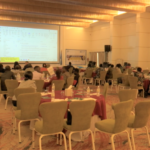
- Household incomes have decreased by 4%, while costs have increased across majority of countries observed year-over-year
- In Zimbabwe, costs to send a house of children to school this year will cost more than 6 times more than the average household income for a given family
- Of all countries observed, the US can expect to pay the lowest percentage of their household income (7%), and Uganda can expect to pay the highest percentage (838%)
LONDON, United Kingdom, 16 August 2022,-/African Media Agency (AMA)/-WorldRemit today announced the results of its 2022 Cost of School study , observing how the changing macroeconomic environment has affected the true cost of education across 21 markets globally.
With the back-to-school season fast approaching, the study, first launched in August 2021, compares the average cost of basic educational needs with average annual incomes and fertility rates to determine the season’s financial impact on families around the world.
Year-over-year findings
Of the 10 countries examined in both 2021 and 2022, four are considered developed countries: United Kingdom, United States, Canada, and Australia. The 2022 findings reveal the average household income decreased by 4%, fertility rates remained steady and the cost of basic school supplies increased by more than 7% on average.
2022 – All figures are in USD
United Kingdom
- Average Annual Income – 36.2K
- Average Monthly Income – 3,020
- Average Children per household – 1.63
- Average Cost of School Supplies per child – 197.88 (+8.47%)
- Average Total Cost of School Supplies per household – 322.54
- Percentage of Monthly Income – 11% (+3%)
United States
- Average Annual Income – 53.3K
- Average Monthly Income – 4,441
- Average Children per household – 1.84
- Average Cost of School Supplies per child – 179.57 (+6.87%)
- Average Total Cost of School Supplies per household – 330.41
- Percentage of Monthly Income – 7.4% (+1.4%)
Canada
- Average Annual Income – 34.8K
- Average Monthly Income – 2,900
- Average Children per household – 1.57
- Average Cost of School Supplies per child – 220.77 (+7.76%)
- Average Total Cost of School Supplies per household – 346.61
- Percentage of Monthly Income – 12% (+7%)
Australia
- Average Annual Income – 39.2K
- Average Monthly Income – 3,266
- Average Children per household – 1.73
- Average Cost of School Supplies per child – 184.50 (+7.32%)
- Average Total Cost of School Supplies per household – 319.19
- Percentage of Monthly Income – 10% (+6%)
Of the remaining six countries indexed (Nigeria, Philippines, Mexico, India, Tanzania and Uganda), household income decreased by an average of 4% and fertility rates remained steady. Meanwhile, the cost of school supplies ranged from a 57% increase year-over-year in India to a 40% decrease in the Philippines, while the average increase across the other countries hovered around 5%.
Across all 10 countries observed in both 2021 and 2022 studies, the dramatic increase of specific school items illustrates how inflation is hitting home on schooling costs and impacting families across the world, depending on how many items they needed to buy for this upcoming year:
- In the UK, the cost of a backpack more than doubled the amount, from $8.98 in 2021 to $19.03 USD in 2022
- In Australia, the cost of a jumper increased by 266%, from $9.86 to $26.28 USD
- In the Philippines, where families can expect to save overall, the cost of a single pencil increased by 33% year-over-year
- In Mexico, families can expect to spend 10% more for school supplies this year, with significant increases observed in the cost of a water bottle (+264%), gym shoes (+200%) and pencil sharpeners (+29%)
- In Nigeria, families can expect to pay 9% more in school supplies, with the item boasting the greatest percentage increase being a 30cm ruler (+30%)
2022 study: findings of the 11 additional countries observed
To advance this annual study, WorldRemit observed eleven new countries, looking at the standard school supply costs. Of these, Zimbabwe showed the highest costs relative to average family size and monthly income at nearly 700% of the average family household income. Other countries, including Morocco, Cameroon, Ghana, Kenya and Guatemala all can expect to pay more than 100% of their monthly household income on school supplies this season.
- In Guatemala, the cost of standard school supplies will cost a family nearly US $670, while the average household only makes US $328.75 in a given month.
- In Colombia, families can expect to pay more than 15% of their monthly income on drawstring gym bags for their children this upcoming school year.
- In Dominican Republic, physical education classes will cost the most, with gym shoes and exercise books topping the list in the region as the most expensive items.
- In Morocco, each child’s basic school supplies will cost a family more than 50% of their total monthly income, and the average family has 2.29 children throughout the region.
- In Zimbabwe, costs to send a family’s house of children to school this year will cost more than 6 times more than the average household’s income.
- In Lebanon, apparel will take up the largest portion of school budget this year, with polo shirts for a family costing more than 20% of the family’s average monthly income.
- In Cameroon, costs for sending a household of children to school this year will cost families nearly 4 times their monthly income.
- In Ghana, basic shoes for school-bound children mark the highest expense, accounting for nearly 25% of all costs this year.
- In Kenya, families will pay more than 1.75 times their household monthly income on school supplies.
- In France, sending a household of children to school will cost families more than 14% of their monthly income.
- In Spain, sending a household of children to school will cost families nearly 13% of their monthly income.
WorldRemit recently connected with 3,000 international money senders to learn how inflation is impacting their daily behaviours and spending habits. The group listed educational support as one of the three primary reasons they send money overseas, but noted that as a result of the rising living costs, 52% now send money abroad to fewer people, with 72% now only sending to close family.
More than 244 million people are classified as immigrants around the world and account for large percentages of populations in countries like the United States (14.4% of total population), UK (9%) Australia (30%) and Canada (21.5%).
For the nearly 250 million people who live in different countries than their families, understanding the true cost of education is often top of mind. As such, planning for a child’s return to school can take months of financial planning for those working overseas to support family in their home country.
To learn more about the study and see full results, visit https://www.worldremit.com/en/back-to-school
Notes to Editors:
Methodology
In the study, WorldRemit looked at the following countries and researched basic school supplies:
- United States of America
- United Kingdom
- Canada
- Australia
- Philippines
- Mexico
- Uganda
- Tanzania
- India
- Nigeria
- Guatemala
- Colombia
- Dominican Republic
- Morocco
- Zimbabwe
- Lebanon
- Cameroon
- Ghana
- Kenya
- France
- Spain
The primary school items were selected based on the most common back to school items. The price of each item was searched for online and the lowest price item was selected from one of the most popular online retailers in that country. The prices were researched in July 2022. The exchange rate from the local currency was calculated on 06/08/2022 at 9:00 BST. The fertility rate and income was gathered from the CIA world factbook.
- United Nations, Department of Economic and Social Affairs, Population Division (2015). Trends in International Migrant Stock: The 2015 Revision. (United Nations database, POP/DB/MIG/Stock/Rev.2015).
- UK Parliament, House of Commons Library: Migration Statistics (2021, Quarter 2).
- Australian Bureau of Statistics: Migration, Australia (2021, Quarter 2).
- Statista: Immigration in Canada: Statistics & facts (2021, Quarter 3).
Distributed by African Media Agency (AMA) on behalf of WorldRemit.
About WorldRemit
We’re a leading global payments company and, along with Sendwave, part of Zepz, a group powering two global payments brands.
We disrupted an industry previously dominated by offline legacy players by taking international money transfers online – making them safer, faster and lower-cost. We currently send from 50 countries to recipients in 130 countries, operate in more than 5,000 money transfer corridors worldwide and employ over 1,200 people globally.
On the sending side WorldRemit is 100% digital (cashless), increasing convenience and enhancing security. For those receiving money, the company offers a wide range of options including bank deposit, cash collection, mobile airtime top-up and mobile money.
Backed by Accel, TCV and Leapfrog – WorldRemit’s headquarters are in London, United Kingdom with regional offices around the globe.
Media Contact
WorldRemit Press Office





